Robot mobilny o zmiennej konfiguracji narzędzi wykonawczych oraz struktury kinematycznej. Roboty latające sześcio i czterowirnikowe o udźwigu do 6 kg i częściowej autonomii oraz roboty o zmiennej geometrii napędów zapewniające pionowy start i lot ze skrzydłem.
Istniejące technologie bazują na idei modułowości głównie softwarowej. Zastosowana przez nas technologia rozszerza ideę robotów modułowych o komponenty hardwarowe.
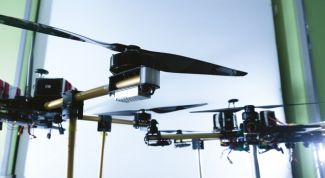
Współcześnie roboty mobilne znajdują zastosowanie niemal w każdej gałęzi przemysłu, a ich wykorzystanie obniża koszty produkcji i buduje przewagę nad konkurencją. Wykorzystywane są zarówno do transportu wewnątrzzakładowego i mapowania wielkopowierzchniowego, jak i do inspekcji terenów strategicznych. Opracowany przez Instytut Automatyki robot mobilny o modułowej konstrukcji oraz roboty latające dają możliwość szybkiego i taniego zweryfikowania, jaka struktura robotów sprawdzi się w zakładanej aplikacji, a posiadana przez twórców wiedza umożliwia dostosowanie rozwiązania do końcowych wymogów. Technologia może znaleźć zastosowanie w dowolnej branży, w której wymagane jest wykorzystanie robotów mobilnych do inspekcji, transportu lub testów.
Stanowisko do badań interakcji człowiek – robot z systemem kontroli wizyjnej i siłowej.
Technologia pozwala na automatyzację i robotyzację procesów terapeutycznych i technologicznych z wykorzystaniem robotów współpracujących, systemów wizyjnych, sprzężenia siłowego i metod sztucznej inteligencji.
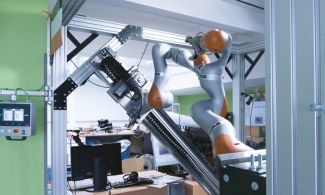
Stworzona przez Instytut Automatyki technologia ma zastosowanie w identyfikacji i modelowaniu różnych procesów aktualnie wykonywanych manualnie w celu ich częściowej lub całkowitej robotyzacji. Pozwala na prototypowanie systemów współpracy człowiek – robot z wykorzystaniem sprzężeń siłowych, taktylnych, wizyjnych.
Technologia skierowana jest do różnego rodzaju branż przemysłowych oraz medycznych.
Ogniwa fotowoltaiczne nowej generacji o podwyższonej efektywności.
Wielkopowierzchniowe instalacje fotowoltaiczne o niskich kosztach wytwarzanej energii elektrycznej z możliwością wykorzystania w formie instalacji BIPV.
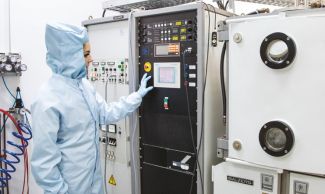
Opracowana technologia pozwala na stworzenie ogniw i/lub modułów fotowoltaicznych wyposażonych w warstwy wykorzystujące efekt konwersji promieniowania słonecznego o wyższych energiach na promieniowanie z zakresu światła widzialnego. Warstwy wykonane są tanimi, komercyjnie dostępnymi technikami, takimi jak sitodruk. Niewątpliwą korzyścią jest możliwość zastosowania ich w dowolnych typach ogniw i modułów fotowoltaicznych, w tym w rozwiązaniach BIPV. Rozwiązanie dedykowane jest firmom zajmującym się rozwojem technologii półprzewodnikowej, technologii optoelektronicznej, fotowoltaicznej, zwłaszcza z zakresu BIPV.
Wyłączanie silnych prądów stałych w próżni za pomocą przeciwprądu, przejmowanie takich prądów z zestyków w powietrzu i w próżni za pomocą aktywnego elementu półprzewodnikowego, synchronizowane wyłączanie silnych prądów przemiennych oraz metod ograniczania wysokoenergetycznych przepięć łączeniowych.
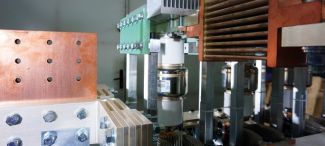
W dobie elektromobilności wyłączniki są głównym zabezpieczeniem pojazdów trakcji kolejowej i miejskiej zasilanych niskim napięciem stałym. Mogą być wykorzystane również w górnictwie jako zabezpieczenie główne pojazdów pracujących w kopalniach, a także w pokrewnych układach przemysłowych, militarnych lub cywilnych zasilanych prądem stałym.
Wyniki wieloletnich prac badaczy z Katedry Aparatów Elektrycznych Politechniki Łódzkiej pozwoliły na opracowanie nowych zasad budowy i działania ultraszybkich wyłączników próżniowych i hybrydowych prądu stałego oraz synchronizowanych wyłączników próżniowych prądu przemiennego, przeznaczonych dla trakcji elektrycznej. Odbiorcą technologii może być przemysł oraz społeczeństwo, które narażone jest na niebezpieczne i nieprzewidywalne skutki zwarć w autobusie czy tramwaju.
Zaawansowane metody sterowania – sterowanie odporne, sterowanie nieliniowe, adaptacyjne i optymalne – oraz wykorzystanie sztucznej inteligencji i systemów eksperckich do podejmowania decyzji.
Skomplikowana natura zjawisk oraz ich zmienność powodują, że sterowanie procesami wymaga zaawansowanych metod matematycznych, doboru odpowiednich czujników oraz elementów wykonawczych. W wielu przypadkach niezbędny jest etap identyfikacji procesu lub zjawiska, tworzenia modelu oraz doboru sposobu sterowania.
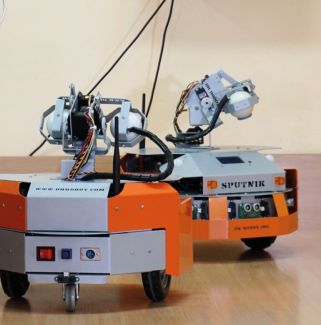
Oferta Instytutu Automatyki obejmuje wykonywanie projektów i prototypów układów pomiarowych i sterujących realizujących funkcjonalność oczekiwaną przez zamawiającego. W przypadku projektów o złożonej strukturze sterowania istnieje możliwość wykonania wstępnych badań symulacyjnych, które umożliwią zamawiającemu ocenę jakości działania całej struktury sterowania bez konieczności wykonywania testów na docelowym obiekcie. Usługa dedykowana jest wszystkim przedsiębiorstwom, w których wymagane jest sterowanie procesami.
Tomografia procesowa: nieinwazyjne monitorowanie procesów przemysłowych.
Inteligentny system nieinwazyjnej diagnostyki i sterowania wybranych procesów przemysłowych.

Przygotowana przez Instytut Informatyki usługa dedykowana jest przedsiębiorstwom, które w produkcji stosują mieszaninę faz gaz–ciecz–ciało stałe i proces ten nie funkcjonuje optymalnie lub jest nieekonomiczny. Tomografia procesowa jest w stanie zapobiec wystąpieniu awarii i zatrzymaniu linii produkcyjnej oraz zniwelować sytuacje, gdy za przyczyną złych parametrów przepływu finalny produkt okazuje się wadliwy. Usługa sprawdza się także wtedy, gdy dany proces wymaga stałego nadzoru. System dedykowany jest przedsiębiorstwom m.in. z branży chemicznej, farmaceutycznej, spożywczej, energetycznej czy wydobywczej.
Opracowania konstrukcyjne układów zestykowo-gaszeniowych łączników elektrycznych wraz z dedykowanymi systemami komputerowymi do badań łączników elektrycznych i ich elementów oraz wykonywanie ekspertyz naukowo-technicznych z zakresu zastosowania i działania łączników wraz z poprawnym doborem materiałów stykowych.
Wyłączniki są głównym zabezpieczeniem pojazdów trakcji miejskiej, które zasilane są niskim napięciem stałym. Ponadto mogą być wykorzystywane w górnictwie, a także wszystkich pokrewnych układach przemysłowych, militarnych lub cywilnych zasilanych prądem stałym.
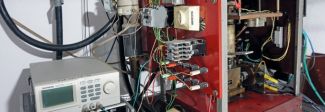
Oferowana przez Katedrę Aparatów Elektrycznych usługa może znaleźć zastosowanie podczas opracowywania nowych rozwiązań krajowych oraz być wsparciem dla producentów aparatów elektrycznych, konstruktorów materiałów stykowych, konstruktorów systemów zasilania czy dostawców globalnych.
Modelowanie i projektowanie sieci radiowych działających w pobliżu ciała człowieka (WBAN) na potrzeby systemów piątej generacji (5G).
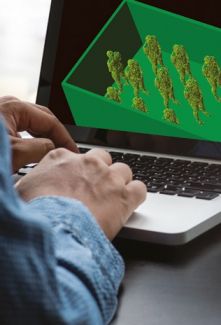
Zastosowanie specjalnych modeli numerycznych ludzkiego ciała oraz algorytmów automatycznej optymalizacji umożliwia zaprojektowanie systemu bezprzewodowego działającego w pobliżu ciała, z uwzględnieniem zjawisk propagacyjnych wpływających na bilans mocy w łączu.
Zakład Telekomunikacji oferuje usługi związane z projektowaniem anten przeznaczonych do pracy w pobliżu ciała człowieka w pasmach mikrofalowych, pomiarami charakterystyk anten i modelowaniem wpływu ciała człowieka na systemy bezprzewodowe pracujące w jego pobliżu oraz oddziaływaniem systemów bezprzewodowych na ciało człowieka w oparciu o nowoczesne techniki pomiarowe. Usługa skierowana jest do przedsiębiorstw z branży telekomunikacyjnej rozwijających usługi i urządzenia pod kątem systemów 5G.
Analiza drgań i hałasu urządzeń elektrycznych: modelowanie teoretyczne i badania eksperymentalne maszyn elektrycznych i transformatorów w celu wyznaczenia ich drgań i emitowanego hałasu.
W ramach usługi badawczej oferowana jest analiza drgań własnych i wymuszonych w silnikach indukcyjnych, maszynach z magnesami trwałymi i transformatorach oraz zastosowanie numerycznych metod obliczeniowych do wyznaczania pól drgań i naprężeń mechanicznych oraz emisji akustycznej w maszynach elektrycznych i transformatorach.
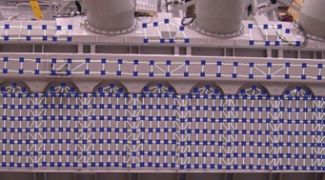
Usługa opracowana przez Instytut Mechatroniki i Systemów Informatycznych może znaleźć zastosowanie przy identyfikacji zjawisk akustycznych występujących w przetwornikach elektromagnetycznych oraz daje możliwość określenia ich wpływu na środowisko. Usługa kierowana jest do firm z branży elektromechanicznej, które zajmują się produkcją i serwisem maszyn elektrycznych i transformatorów.
